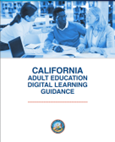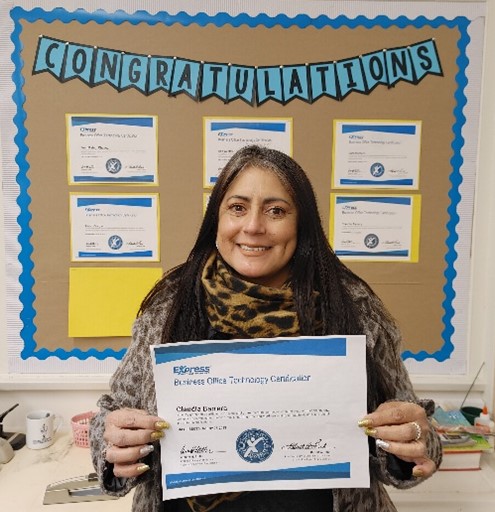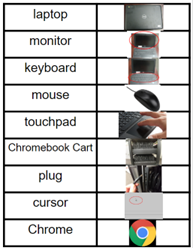The Importance of Supporting ESL Students in CTE Pathways
by Alisa Takeuchi
English language learners are students who are learning English as a second language (ESL). They come from a variety of backgrounds and cultures, and they may have different levels of English proficiency. Despite these differences, ESL students have the same potential as any other student to succeed in career and technical education (CTE) pathways.
CTE can provide ESL students with several benefits, including:
- Real-world skills: CTE courses teach students the skills they need to succeed in in-demand careers. This can help ESL students get a good paying job and contribute to the economy.
- A pathway to college: CTE courses can also help ESL students prepare for college. Many CTE programs offer dual enrollment opportunities, which allow students to earn an industry recognized certificate while attending a language support class.
- A sense of belonging: CTE programs can help ESL students feel like they belong. They can connect with other students who share their interests and goals.
However, ESL students face some challenges in CTE pathways. These challenges can include:
- Language barriers: ESL students may have difficulty understanding the instruction in CTE courses. They may also have difficulty reading and writing in English
- Cultural differences: ESL students may come from cultures that are different from the dominant culture in the United States. This can make it difficult for them to adjust to the expectations of CTE programs and the workplace.
- Lack of support: ESL students may not receive the support they need to succeed in CTE pathways. They may not have access to qualified English language teachers or CTE teachers who are familiar with the needs of ESL students.

The California Adult Education Digital Learning Guidance provides a number of recommendations for supporting ESL students in CTE pathways. Some recommendations include:
Chapter 4: Designing Flexible Learning Environments
This chapter provides recommendations for designing flexible learning experiences that are accessible to ESL students. Teachers can do this by incorporating visuals and hands-on activities: Visuals and hands-on activities can help ESL students understand the material in CTE courses. For example, teachers can use diagrams, charts, and graphs to explain complex concepts. They can also use role-playing, simulations, and experiments to give ESL students a hands-on experience with the material.
Use scaffolding: Scaffolding is a teaching strategy that provides support to students as they learn. Teachers can use scaffolding to break down complex tasks into smaller steps, provide hints and prompts, and give students extra time to complete assignments. For example, a teacher might give an ELL a list of vocabulary words to learn before starting a project. The teacher could also provide the ELL with a template or checklist to help them complete the project.

Including the Triple E model would provide a robust lesson plan assisting the teacher to ensure Engagement, Enhancement, and Extension activities are woven throughout the unit.
Examples of how the ESL and the CTE teacher do this could be:
Engagement:
- A teacher could use a video to introduce a new topic. The video could be in English with subtitles in the adults' native language. The teacher could also ask adults to share their own experiences related to the topic.
- A teacher could use a role-playing activity to help adults practice a new skill. The activity could be in English with a facilitator who is fluent in the adults' native language to provide support.
- A teacher could create a forum where adults can ask questions and share their experiences. The forum could be in English with a translation feature so that adults can communicate with each other in their native language.
Enhancement:
- A teacher could provide adults with a checklist of the steps they need to take to complete a project. The checklist could be in English and in the adults' native language. The teacher could also provide adults with a template or rubric to help them stay on track.
- A teacher could give adults extra time to complete assignments. This would allow adults who are struggling with the material to have more time to practice and learn.
- A teacher could use technology to provide adults with access to resources in their native language. This could include online textbooks, articles, and videos
Extension:
- A teacher could ask adults to complete a project that involves applying their learning to a real-world situation. This could involve working on a team to solve a problem or developing a product.
- A teacher could encourage adults to take on challenges and stretch themselves. This could involve taking on a leadership role in a project or volunteering to teach others.
- A teacher could celebrate adults' successes and provide them with positive reinforcement. This could involve giving them verbal praise, public recognition, or a certificate of completion.

Chapter 5: Adopting Models That Work
This chapter discusses the importance of CTE teachers collaborating with ESL teachers to ensure that ESL students are receiving the support they need. Teachers can work together to develop lesson plans, provide feedback on student work, and create a supportive learning environment for ESL students. For example, a CTE teacher and an English language teacher could work together to develop a lesson plan that incorporates both English language instruction and CTE content.
Chapter 6: Data-Driven Instruction and Digital Assessments
Develop formative assessments: Formative assessments are a way for teachers to track students' progress and adjust their instruction as needed. Teachers can use formative assessments to identify the areas where students need additional support. There are many ways teachers can develop formative assessments. Here are a few examples:
- Quizzes: Quizzes are a quick and easy way to assess students' understanding of a particular topic. Teachers can give quizzes at the end of a lesson or unit to see how well students have learned the material.
- Exit tickets: Exit tickets are a short survey that students complete at the end of class. Teachers can use exit tickets to gauge students' understanding of the day's lesson or to get feedback on the class.
- Think-pair-share: Think-pair-share is a collaborative learning strategy that can be used to assess students' understanding of a concept. Teachers pose a question or prompt to the class, and students have a few minutes to think about their answer. Then, students pair up with a partner to discuss their answer. Finally, students share their answer with the class.
- Peer review: Peer review is a process in which students assess each other's work. Teachers can give students rubrics to use when they peer review each other's work. This can be a helpful way for students to learn from each other and to get feedback on their work.
- Self-assessment: Self-assessment is a process in which students reflect on their own learning. Teachers can give students prompts or questions to help them self-assess their work. This can be a helpful way for students to become more aware of their own learning and to set goals for improvement.

When developing formative assessments, it is important to keep in mind the following principles:
- Formative assessments should be frequent: Formative assessments should be given regularly so that teachers can track students' progress and make adjustments to their instruction as needed.
- Formative assessments should be low stakes: Formative assessments should not be graded, so that students feel comfortable taking risks and making mistakes.
- Formative assessments should be specific: Formative assessments should be designed to assess specific learning objectives. This will help teachers to identify the areas where students need additional support.
- Formative assessments should be useful: Formative assessments should provide teachers with information that they can use to improve their instruction. This information can be used to differentiate instruction, provide targeted feedback, and reteach concepts that students are struggling with.

By following these recommendations, teachers can help ESL students overcome the challenges they face and succeed in their chosen career pathways.
In addition to the recommendations listed above, it is important to remember that every student is different. What works for one student may not work for another. It is important to be flexible and to be willing to adjust your teaching strategies as needed. It is also important to be patient and understanding. ESL students are learning a new language, a new culture, and perhaps even new career content. They need time to adjust and to develop their skills.
With the right support, ESL students can succeed in CTE pathways. They can learn the skills they need to get a good job and contribute to the economy. They can also build a sense of belonging and thrive in a supportive learning environment.

